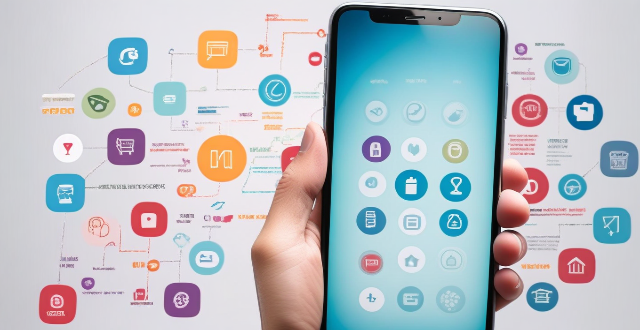The text discusses the seamless integration of smart wearables and smartphones, which is achieved through Bluetooth technology and platform compatibility. Smart wearables are designed to be compatible with major operating systems like Android and iOS, ensuring easy connectivity with smartphones. Dedicated apps for these devices enable seamless communication and provide users with real-time updates and notifications. Examples of smart wearables include smartwatches and health trackers, which display notifications, track fitness metrics, and sync data with smartphone apps. The integration of these devices allows users to stay connected and informed without being tethered to their smartphones.

Smart Wearables and Smartphones: A Seamless Integration
Introduction
Smart wearables and smartphones have become an integral part of our daily lives, providing us with a seamless communication and connectivity experience. The integration between these two devices is achieved through various technologies and platforms, allowing users to stay connected and informed without being tethered to their smartphones. In this article, we will explore the different ways in which smart wearables integrate with smartphones to provide a seamless user experience.
Bluetooth Technology
Key Points:
- Low Energy Consumption: Bluetooth technology allows for low energy consumption, making it ideal for use in smart wearables.
- Short Range Connectivity: Bluetooth provides short-range connectivity, ensuring that the connection between the smart wearable and smartphone remains stable and secure.
Bluetooth technology is one of the primary ways in which smart wearables integrate with smartphones. This wireless technology allows for low energy consumption, making it ideal for use in smart wearables. Additionally, Bluetooth provides short-range connectivity, ensuring that the connection between the smart wearable and smartphone remains stable and secure.
Platform Integration
Key Points:
- Compatibility with Major Operating Systems: Smart wearables are designed to be compatible with major operating systems like Android and iOS.
- App Ecosystem: Many smart wearables come with dedicated apps that allow users to customize their settings and access additional features.
Smart wearables are designed to be compatible with major operating systems like Android and iOS. This ensures that users can easily connect their smart wearable to their smartphone regardless of the platform they are using. Additionally, many smart wearables come with dedicated apps that allow users to customize their settings and access additional features. These apps also enable seamless communication between the smart wearable and smartphone, providing users with real-time updates and notifications.
Examples of Smart Wearables and Their Integration with Smartphones
Key Points:
- Smartwatches: Smartwatches can display notifications, track fitness metrics, and even make phone calls when paired with a smartphone.
- Health Trackers: Health trackers can sync data with smartphone apps to provide users with detailed insights into their health and fitness levels.
There are several examples of smart wearables that integrate with smartphones to provide a seamless user experience. Some of these include:
1. Smartwatches: Smartwatches can display notifications, track fitness metrics, and even make phone calls when paired with a smartphone. They often use Bluetooth technology to connect to the smartphone and rely on dedicated apps for customization and additional features.
2. Health Trackers: Health trackers can sync data with smartphone apps to provide users with detailed insights into their health and fitness levels. These devices typically use Bluetooth technology for connectivity and rely on dedicated apps for data analysis and visualization.
Conclusion
In conclusion, the integration between smart wearables and smartphones is achieved through various technologies and platforms, including Bluetooth technology and platform compatibility. This integration provides users with a seamless communication and connectivity experience, allowing them to stay connected and informed without being tethered to their smartphones. As the technology continues to evolve, we can expect even more advanced integration between these two devices in the future.